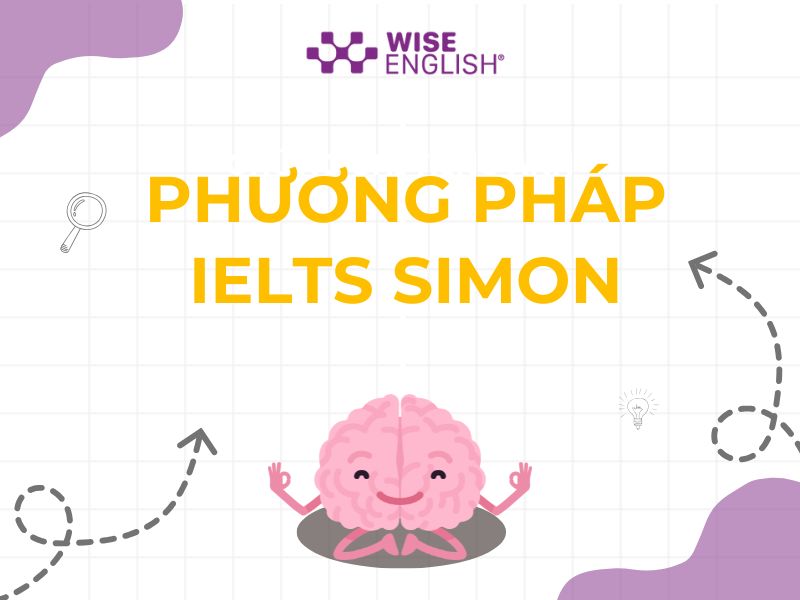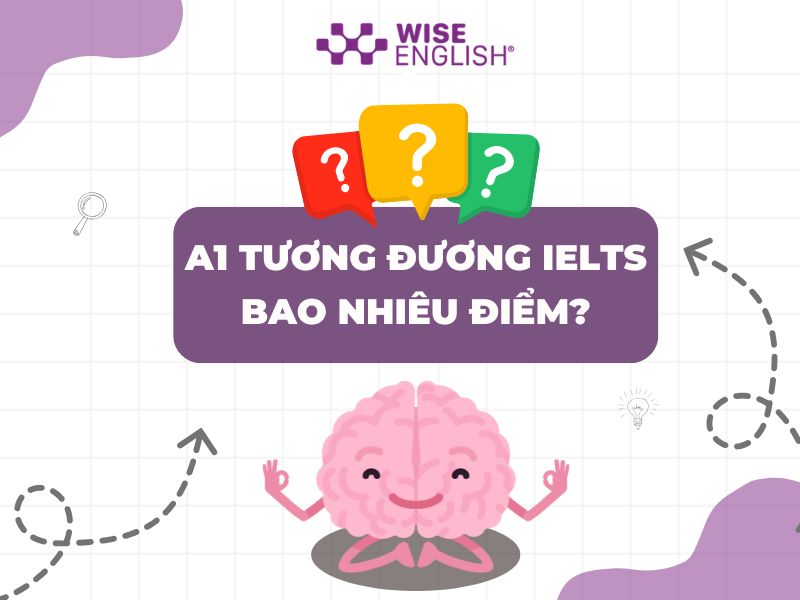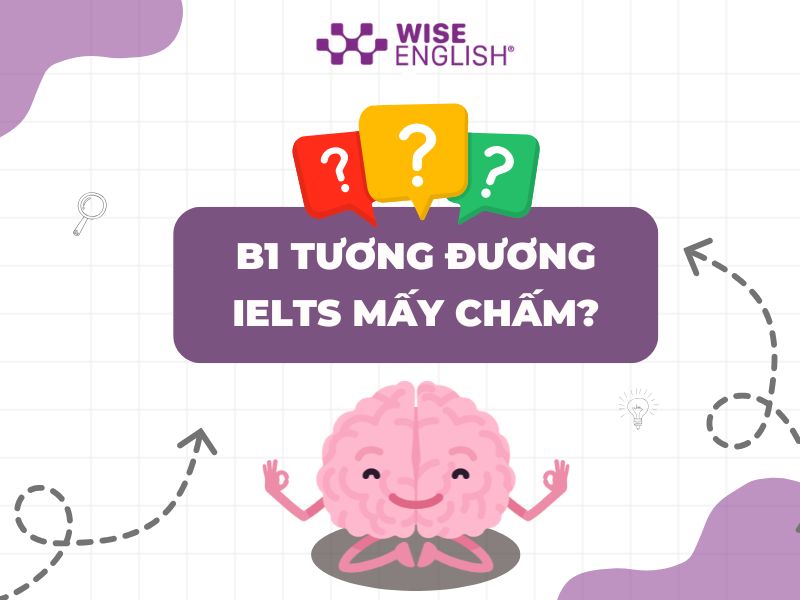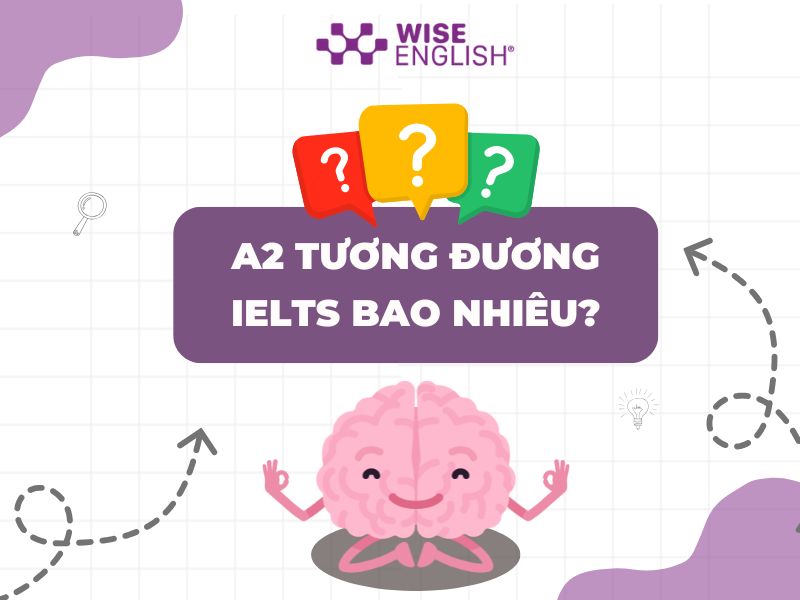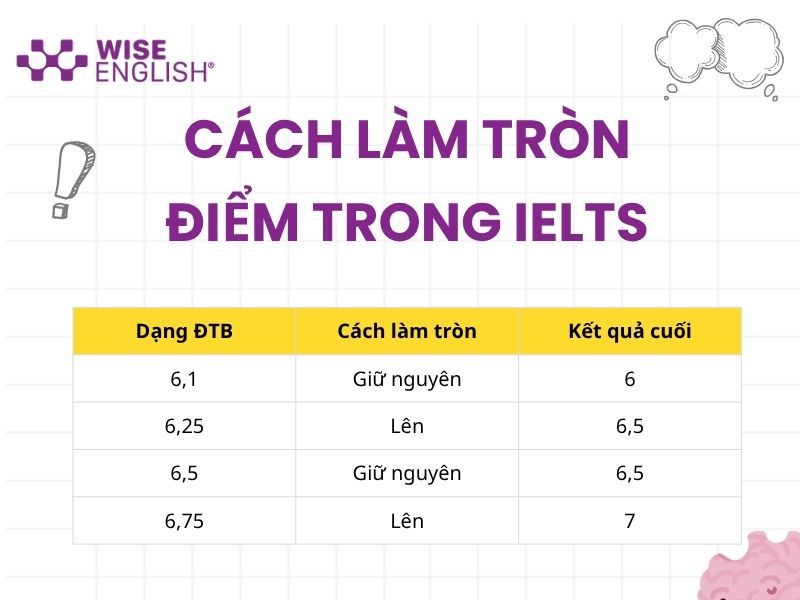Bạn có muốn học cách sống hạnh phúc hơn trong cuộc sống? Bạn có muốn biết những bí quyết, lời khuyên và kinh nghiệm của những người đã tìm thấy niềm vui và ý nghĩa trong cuộc sống? Bạn có muốn cải thiện kỹ năng đọc hiểu tiếng Anh và chuẩn bị cho kỳ thi IELTS? Nếu câu trả lời là có, thì bài viết này là dành cho bạn!
Trong bài viết này, WISE English sẽ tổng hợp cho bạn 3 bài How to be happy IELTS Reading kèm đáp án chi tiết. Những bài đọc IELTS Reading về topic How to be happy sẽ giúp bạn khám phá những yếu tố, phương pháp và thói quen giúp tăng cường hạnh phúc và giảm căng thẳng trong cuộc sống. Bạn cũng sẽ được học hỏi những từ vựng, cấu trúc và kỹ năng cần thiết để hoàn thành các bài IELTS Reading một cách tự tin và thành công.
Đừng bỏ qua cơ hội tuyệt vời này để nâng cao trình độ tiếng Anh và kiến thức về hạnh phúc của bạn. Hãy đọc ngay những bài về topic How to be happy IELTS Reading kèm đáp án này và xem bạn có thể đạt được bao nhiêu điểm nhé!

Các bài how to be happy IELTS reading
I. What makes us happy?
1. Passage về How to be happy

Do you seriously want to be happy? Of course, you do! But what does it take to be happy? Many psychologists are now using scientific methods to try to understand the nature and origins of happiness. Their results may surprise you.
Surprisingly, happiness has been shown to be a constitutional trait. The study of different types of twins; identical and non-identical, has enabled scientists to calculate that 50-60% of self-identified happiness – and what other sort is there? – is down to genes. Of course, there is no one specific gene that determines happiness, but a great many and they tend to overlap with the genes that determine personality. People who are emotionally stable, sociable and conscientious, tend to be happier according to the research.
Now, many people believe that money makes us happy. However, there is no clear relationship between wealth and happiness. Once out of poverty, increases in wealth do not automatically turn into relative increases in happiness. For example, winning the lottery may give a rush of joy and excitement but does not ensure long-term contentment. In fact, studies have shown that lottery winners take less pleasure in everyday events following their win. It seems that they soon get habituated to their money, while at the same time they have distanced themselves from their former lives and identities by leaving jobs, friends and lifestyle.
Nor does a steady increase in income make for greater happiness. The more we have, the more we seem to want, so we are always stuck at the same level of satisfaction/dissatisfaction. The perception of wealth is a relative thing: we are discontented when those who we compare ourselves with are better off than ourselves. This goes some way to explain why, in most Western countries, average incomes have increased considerably but without any increase in the average levels of happiness.
If wealth does not bring happiness, what about spending it? There is no doubt that shopping gives us a short-lived burst of pleasure – but very little more than that. The only type of shopping that might provide longer-term happiness is when we buy things for other people.
Nor does happiness does not come in liquid or tablet form. A couple of drinks at a party may lighten our mood and be good for us medically and mentally, but alcohol abuse destroys our body, mind and relationships. Similarly, drugs like cocaine and ecstasy give brief bursts of joy but there is a massive price to be paid when the high is over.
So, what can we do to improve our sense of well-being? First, we need to realise that we are not passive victims of external events. We can and should take control of our life to make it rewarding and satisfying. We should adopt a positive attitude, and overcome feelings of worthlessness and build our own self-confidence and self-esteem.
We should try to reduce the burden of unnecessary worry. If there is something that can be done about a problem we are worrying about then we should do it, and stop worrying. And of course, there is no point in worrying about things we can’t change. A sense of humour is good protection against adversity and a strong antidote to depression. One of the key symptoms of depression is the loss of the ability to laugh.
A key feature of happy and contented people is that they have a sense of meaning and purpose in life. Rather than just drifting through life, they have a clear set of values and goals that they are trying to achieve. This could be associated with faith, humanitarianism and family values, artistic or scientific aspirations and career ambitions. All these things provide a sense of identity as well as something to work towards or look forward to.
Happiness is a positive by-product of keeping active. But not just being busy, we need to be doing things that raise self-esteem and bring us satisfaction; controlling our own schedule and prioritising activities that satisfy our own needs. And saying ‘no’ to other people if necessary. Of course, this doesn’t mean we have to be selfish. Being active members of the community or volunteering for a charity or helping your family can all create happiness – particularly for older people.
So, should we actively pursue happiness? Curiously, the happiest people seem to be those who do not actively see it – indeed the ‘pursuit of happiness’ may be counterproductive. To a large extent, happiness emerges as a by-product of who we are and what we do. Conversely, people who focus on making others happy usually make themselves happy in the process.
Xem thêm:
2. Questions
Questions 1-3
Choose the correct letter A, B, C or D.
Write the correct letter in boxes 1-3 on your answer sheet.
1 The main topic discussed in the text is:
A the danger of worrying about things beyond our control
B the difficult task of identifying what makes us happy
C key indicators of depression
D activities which can make us happy
2 A study of different types of twins suggests
A happiness is mostly a genetic trait.
B ‘happiness’ and ‘personality’ are not related.
C identical twins are more emotional than non-identical twins.
D scientists are not happy people.
3 According to the text, a steady rise in income
A increases anyone’s level of happiness.
B creates a steady decline in happiness.
C happens frequently in Western cultures.
D does not necessarily lead to greater happiness.
Questions 4-6
Complete the sentences below.
Choose NO MORE THAN TO WORDS from the passage for each answer
Write your answers in boxes 4-6 on your answer sheet.
4 Observation of lottery winners suggests that there is no relationship between happiness and………………………..
5 When we compare ourselves to others we discover that the concept of ‘wealth’ is………………………..
6 The types of purchases which are most likely to provide us with happiness are those purchased for………………………
Questions 7-9
Do the following statements agree with the information given in Reading Passage 1?
In boxes 7-9 on your answer sheet write
YES if the statement agrees with the claims of the writer
NO if the statement contradicts the claims of the writer
NOT GIVEN if it is impossible to say what the writer thinks about this
7 We are all unwilling participants in events beyond our control.
8 A crucial determiner of happiness is starting each day by writing a ‘to-do’ list.
9 ‘Happiness’ has a strong relationship with our actions and attitudes.
Questions 10-13
Complete the summary using the list of words, A-I, below.
Write the correct letter, A-I, in boxes 10-13 on your answer sheet
A lifestyle B important C by-product
D related E independent F relevant
G scientific H selfish I exclusive
In this article, the author gives us a discussion of ‘happiness’ from a 10 ………………… perspective. The investigation into the influence of money on happiness suggests that the two are not 11…………………. We should be able to say ‘no’ to other people, but this doesn’t require us to be 12………………….. The author concludes that happiness is the 13 ………………… of activity focused on making others happy.
3. Answers
|
Question
|
Answer
|
|---|---|
|
1
|
B
|
|
2
|
A
|
|
3
|
D
|
|
4
|
wealth/money
|
|
5
|
relative
|
|
6
|
other people
|
|
7
|
NO
|
|
8
|
NOT GIVEN
|
|
9
|
YES
|
|
10
|
G
|
|
11
|
D
|
|
12
|
H
|
|
13
|
C
|
II. Think happy
1. Passage
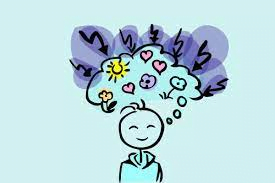
It’s no joke: even scientists at the Royal Society are now taking the search for the source of happiness very seriously.
A. What would Sir Isaac Newton have thought? There he was, painted in oils, seeing one of the most bizarre sessions ever conducted by the Royal Society, the most prestigious scientific organisation in Britain. If Newton had flashed a broad grin, it would have been quite fitting, considering a two-day conference was taking place underneath him last week on a burgeoning new scientific field: the research of what makes individuals happy. Distinguished academics approached the platform, one of which was an expert neurologist prepared with footage of ladies chuckling during comedy flicks, while another was a social scientist with data on national happiness. Hundreds of other researchers sat taking notes on how to boost the number of grins.
B. The Royal Society’s choice to choose “the science of wellbeing” from hundreds of other conference proposals is no laughing matter. In fact, the significance of this inquiry into what makes individuals happy is taken quite seriously. Dr. Nick Baylis, a psychologist at Cambridge University and one of the conference organisers, said, ‘Many philosophies and faiths have addressed this topic, but it has been disregarded by science,’ The Royal Society’s endorsement is crucial because it demonstrates that what we are doing deserves to be recognized and explored by the brightest brains in research.
C. At first appearance, Baylis’s objective, as well as that of an increasing number of other scientists engaged in happiness research, looks ridiculous. They aim to use scientifically rigorous methods to understand why some individuals are perpetually happy while others tend to be miserable. Then, they want to disseminate the happiness secret around the world and, in essence, increase the total amount of human happiness. ‘If someone is happy, they are more well-liked, healthier, live longer, and are more productive at work. Therefore, it is quite valuable,’ he says.
D. Baylis, the only ‘positive psychology’ instructor in Britain, is very aware that the goals of happiness research may seem vague, so he makes every effort to distinguish himself from the hordes of non-academic self-help gurus. He emphasises ‘life satisfaction’ and ‘wellbeing’ and reinforces that his work, as well as the work of others at the conference, is based on solid research. So what researchers have found? – Is there a theory of happiness?
E. According to Professor Martin Seligman, the world’s foremost expert on this subject, happiness is just a commute and a few questionnaires away. A Pennsylvania University psychologist, Seligman, initiated the happiness research movement with a lecture he delivered as president of the American Psychological Association (APA). Frightening delegates at the APA convention, Why, said Saligman, does science just study suffering?
Rather than focusing solely on pain control, why not investigate what actions boost happiness, even among individuals who are not depressed? The lecture may have ended the career of a lesser-known scientist, but Seligman secured over £18 million in funding to pursue his hypothesis. He has been in constant communication with hundreds of other scholars and practising psychologists from across the globe, conducting surveys and developing ways for enhancing happiness.
F. After his findings, he believed that there are three main types of happiness. Firstly, there is “the pleasant life” — the kind of satisfaction we often get from physical pleasures like eating, drinking, and watching a good movie. According to Seligman, Hollywood and the commercial industry have erroneously convinced the rest of us to assume that this is the way to achieve lifelong pleasure.
And the second type is, ‘the good life’, which consists of enjoying what we are good or talented at. The trick is to recognise our abilities and then engage in an activity that utilises them, Seligman argues. Thirdly, ‘meaningful life’. According to Seligman, the key to sustainable pleasure is finding something you believe in and putting your abilities to work for it. Thus, those who are adept at interacting with others may find permanent satisfaction via politics or volunteer work, but a rock star who wants to change the world may find it by organising a charity event.
G. According to Seligman, attaining “the good life” and “the meaningful life” is the key to long-term happiness. He provides a fascinating suggestion for those confused about how to continue. He says that you need a pen, some paper, and depending on your location, a train ticket to go on the road to happiness. First, acknowledge a person to whom you owe a great debt of appreciation but who you have never properly acknowledged.
After that, compose a 300-word essay detailing the significance of the assistance and your appreciation. Then, inform them that you must make a visit, without specifying why, and present the essay to them at their home. Apparently, the outcome was tears, embraces, and a more deep, longer-lasting pleasure than champagne could produce.
H. Some sceptics may argue that science will always be a crude method of exploring and promoting happiness, and that such matters are best handled by artists, authors, and musicians if they can ever be managed. Furthermore, not everyone at the meeting was enthusiastic about the new research. Professor of biology as applied to medicine at University College London Lewis Wolpert, who has authored a best-selling book on his struggle with depression, said, ‘If you were happy, I’d be very suspicious. I believe you would do nothing except sit there in a sticky state of bliss. There is a vast universe out there, and until you experience a little difficulty, you will never really acquire anything.
2. Questions
Questions 1-4
Which paragraph contains the following information?
Write the correct letter A-H in your answer sheet.
1. a remark addressing the potential effects of expressing a certain viewpoint in public.
2. a reference to the possible broader effects of happiness-related studies.
3. a belief that achieving perfect happiness may not be desired.
4. the significance of the fact that the meeting was convened at all.
Questions 5-8
Complete the sentences below with words taken from Reading Passage.
Use NO MORE THAN THREE WORDS for each answer.
5. At the conference, research into happiness was referred to as the ________
6. Baylis and others intend to use ________ to find out what makes people happy or unhappy.
7. Baylis gives classes on the subject of ________
8. Baylis says he should not be categorised among the ________ who do not have academic credentials.
Questions 9-14
Complete the summary below using words from the box.
Write your answers in your answer sheet.
Seligman’s categories of happiness
Seligman’s first type of happiness involves the enjoyment of pleasures such as 9. ______ entertainment. He believes that individuals should not be under 10. ______ illusion that such things lead to happiness that is not just temporary. His second type is related to 11. ______ ability. Identification of this should lead to 12. ______ participation and the result is ‘the good life’. His third type involves having a strong 13. ______ conviction and doing something about it for the benefit of others. This, according to Seligman, leads to happiness that has some 14. ______ permanence.
| incentive | confidence | leadership | entertainment |
| illusion | thrill | effort | perseverance |
| celebration | ability | participation | theory |
| leadership | ego | encouragement | permanence |
| conviction | exaggeration | support | concept |
3. Answers
|
Question
|
Answer
|
|---|---|
|
1
|
E
|
|
2
|
C
|
|
3
|
H
|
|
4
|
B
|
|
5
|
Science of well-being
|
|
6
|
Scientific rigorous methods
|
|
7
|
positive psychology
|
|
8
|
self-help gurus
|
|
9
|
entertainment
|
|
10
|
illusion
|
|
11
|
ability
|
|
12
|
participation
|
|
13
|
conviction
|
III. How to achieve happiness
1. Passage

A We can find happiness right in our own home, our workplace, in school, in the company of our friends, etc. It is up to us to find the ways and means to achieve that happiness each of us seek and long for. However, it is essential to recognize that there is no one absolute way to achieve happiness. People may have different ideas with regard to the ways of achieving happiness. The following classifications are perceived by many people as sources of happiness: family and friends, wealth, position, educational achievement, fame.
B Happiness is a mental state of well-being characterized by positive or pleasant emotions ranging from contentment to intense joy. A variety of biological, psychological, religious, and philosophical approaches have striven to define happiness and identify its sources. Various research groups, including Positive psychology, endeavor to apply the scientific method to answer questions about what “happiness” is, and how we might attain it. Philosophers and religious thinkers often define happiness in terms of living a good life, or flourishing, rather than simply as an emotion. Happiness in this sense was used to translate the Greek Eudaimonia, and is still used in virtue ethics.Happiness economics suggests that measures of public happiness should be used to supplement more traditional economic measures when evaluating the success of public policy.
C The While level of physical healthiness is the biggest determinant of happiness, comparison of financial success with others of the same age group is the second largest source of happiness and unhappiness. Financially richer people tend to be happier than poorer people, according to sociological researcher Glenn Firebaugh, Pennsylvania State University, and graduate student Laura Tach, Harvard University. Their research is focused on whether the income effect on happiness results largely from the things money can buy (absolute income effect) or from comparing one’s income to the income of others (relative income effect). They present their research in a session paper, titled “Relative Income and Happiness: Are Americans on a Hedonic Treadmill?” at the American Sociological Association Centennial Annual Meeting on August 14.Firebaugh argues that, m evaluating their own incomes, individuals compare themselves to their peers of the same age. Therefore a person’s reported level of happiness depends on how his or her income compares to others in the same age group. Using comparison groups on the basis of age, the researchers find evidence of both relative and absolute effects, but relative income is more important than absolute income in determining the happiness of individuals in the United States. This may result in a self-indulgent treadmill, because incomes in the United States rise over most of the adult lifespan. They always dissatisfy with the salary. The survey indicates that the students studied in Harvard University expect to earn much more money than their classmates rather than care about the exact amount of the salary.
D The Minnesota Study of Twins Reared Apart (MISTRA) has a fascinating history, but eventually had 120 pairs of reared-apart twins plus four sets of reared-apart triplets-’the most extensive and intensive study of these rare experiments of (human) nature ever attempted’. In an early report of results it was found that, on most measurable psychological traits, monozygotic twins reared apart (MZA) were as similar as monozygotic twins reared together. Among persons of European ancestry, for psychological features that can be measured, heritabilities range from about 25 per cent to 80 per cent. Or, to put it more concretely , from one-fourth to fourfifths of the variation from person to person in such features as IQ, creativity and happiness, is associated with genetic differences between those persons. That indicates that besides the environments, genetic difference may also affect the happiness. Furthermore, neurobiological evidence shows that left and right frontal lobes play different roles in the emotion. Happiness is a type of emotion, a positive one. From the experiments, happiness and the left prefrontal lobe are combined together. The more active it is, the more positive emotion you sense.
E At the outset of new millennium, a global research had a result that the people living the modem world were even more unhappy. Happiness is a mixture of positive emotions, ranging from a feeling of heavenly bliss or delight to a state of well-being and contentment. There are many ways to be happy; but with crises being on the rise these days, finding happiness can be a bit challenging. Despite of all the stresses associated with life, we still do our best to be happy—because being happy is the only way to keep us afloat. Happiness is considered a very important therapy, both physically and mentally. With it, we are inspired to accomplish whatever goals we want to achieve. It’s a strong drive that keeps us going and helps us live our life every single day. Spend time with individuals who are dear to you. There is nothing more joyful than to be with the people you love. During the weekends, try to schedule a fun trip for you and your partner, or one for your whole family. Just go somewhere else for a change and enjoy the change of scenery. Do something nice for others. Helping others is a very honorable way to find happiness. If your schedule is too tight for volunteer work, you can just donate a small sum of money or some old clothes or toys to charity. When you eat out, try to be a good tipper to the waiters or the valet who safely parked your car. All these simple things will not only make you happy, but other people as well. Start and end your day with a smile. Smiling is a very powerful gesture. There’s no need for words to describe how pleasant it is. If you have a lousy day, smile your way out of the office. When people smile back at you, it will uplift your mood and make you feel better. Spend some time with your friends. A close circle of friends is one of the most important sources of happiness.
2. Question
Questions 1-5
Reading this passage has six paragraphs ,A-E Choosing the correct heading for paragraphs , A-E from the list of heading below. Write the appropriate number, i-x ,in boxes 1-5 on your answer sheet.
List of headings
i The definition of happiness
ii An increase in junk food consumption
iii The source of happiness
iv National dietary recommendations
v Happiness comes from relative comparisons of wealth
vi Research for twin brothers
vii Compare between happiness of male and female
viii The factors affect the happiness
ix Recommendation from the parents
x Happiness help to ease pressure for modern life
xi Students of Harvard University
1 Paragraph A
2 Paragraph B
3 Paragraph C
4 Paragraph D
5 Paragraph E
Questions 6-10
Choose the correct letter, A, B,C or D. Write the correct letter in boxes 6-10 on your answer sheet
6 Which source of happiness is not mentioned in this passage
A wife
B reputation
C diner
D status
7 Which is the most important factor regarding to happiness mentioned in this passage
A wealth
B holiday
C friend
D health
8 Which is not motioned in this passage for affect the happiness
A environment
B gene
C electricity
D frontal lobes
9 A research in the 21 st century indicate that
A always try to directly say no
B modern life makes people not happy
C female specifically feel unhappy
D medicine therapy helped to bring happiness
10 Which suggestion is not mentioned in last paragraph for achieving happiness
A consult a physician
B smile
C help others
D stay with friends
Questions 11-13
Complete each sentences with the correct ending, A-G,below. Write the correct letter A-G in boxes 36-40 on your answer sheet.
A encouraged the scientist to make further study
B expected to earn much money
C identified that environment is not sole factor affect happiness
D certify that people cannot control the happiness
E can cause more happiness when it is active
F indicated reared-apart triplets were useless for the research
G may need close circle of friends for achieving happiness
11 A study of reared-apart twins
12 The left prefrontal lobe of human
13 People living in modern city
3. Answer
|
Question
|
Answer
|
|---|---|
|
1
|
iii
|
|
2
|
i
|
|
3
|
v
|
|
4
|
viii
|
|
5
|
x
|
|
6
|
C
|
|
7
|
D
|
|
8
|
C
|
|
9
|
B
|
|
10
|
A
|
|
11
|
C
|
|
12
|
E
|
|
13
|
G
|
III. Lời kết
Trên đây, WISE đã sưu tầm một số bài về how to be happy IELTS reading. Các bạn nhớ luyện tập thật nhiều nhé.
Đừng quên theo dõi các bài viết mới và follow ngay Fanpage, Group IELTS TIPS – Chiến Thuật IELTS 8.0+ và kênh Youtube WISE ENGLISH để học thêm nhiều bí kíp giúp bạn NÂNG BAND THẦN TỐC và chinh phục các nấc thang của IELTS bằng Phương Pháp Học Vượt Trội và Lộ Trình Cá Nhân Hóa nhé. Chúc các bạn học vui!
📌 Xem thêm: Lộ trình dạy tiếng anh cấp 2
📌 Xem thêm: Danh sách top 10 trung tâm tiếng anh cho trẻ em hàng đầu






